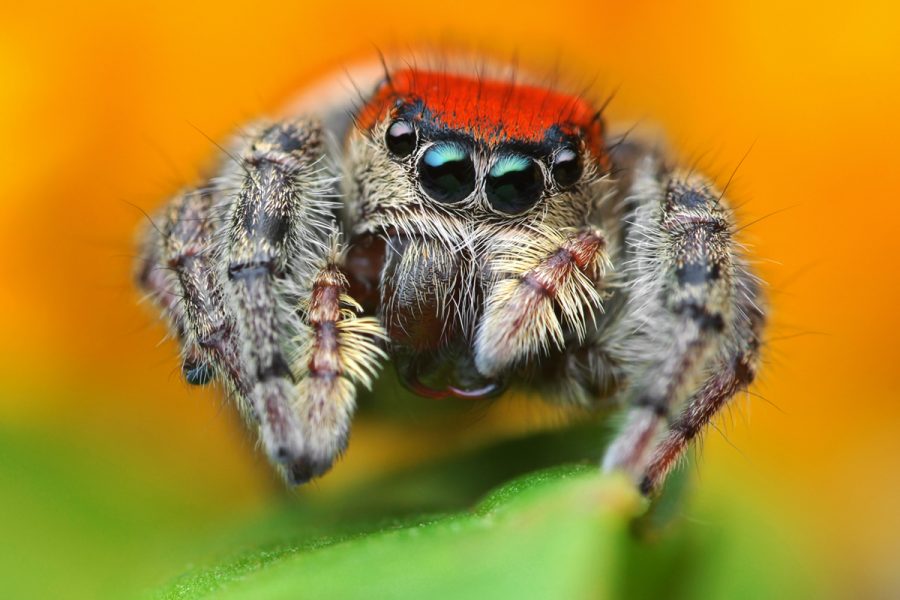Think of an animal that’s cute, fuzzy, and has a big personality. Did you think of a jumping spider? Because you should have! These wee little arachnids have rapidly grown in popularity in the pet trade, recently showing up more at Exotic Pet Expos and trending on Instagram pet accounts. So what’s the deal with these spiders? We’re here to show you just how incredible jumping spiders are and how they can cure your arachnophobia!
An Overview
There are over 6,000 species of jumping spiders found across all continents besides Antarctica. They have a wide variety of colors and patterns from the black and white stripes of the zebra jumping spiders to the vibrant blue-green fangs of the regal jumping spiders. These spiders are highly curious, have excellent vision, and are regarded as the most intelligent arachnids. The small, fuzzy appearance with giant, puppy-dog eyes have made them some of the most sought after spiders in the pet industry.
Experience Level: Beginner

Set-Up
One of the most important parts is finding a suitable container. It’s better to keep the container on the smaller end. Do not choose a container that opens from the top, as your jumping spider will likely try to build its web in the top corners. Instead, find something with a side door. You can find these online or even in some exotic pet expos now. Don’t forget to make sure there is ventilation so your little critter can breathe!
Not only are jumping spiders full of personality, but their enclosures can be, too! Try decorating the container with plants or figurines. Choosing natural substrates is a great way to grow live plants in the enclosure. It’s good to provide the spider with something soft at the bottom of the container in case they fall. You can use soil, coconut fiber, felt, moss, or anything that suits your terrarium desires.
Place the enclosure in a bright, sunny area. Jumping spiders hunt during the daytime and need light to see. If you don’t have a bright place in the house, consider using a lamp. In regards to plants, a plant growth light works great.

Feeding
The best diet for a jumping spider is one that varies. They will eat a wide variety of insects. The easiest ones to find in your local pet stores are crickets, flightless fruit flies, and wax worms. Jumping spiders can catch prey up to 1.5 times their body size, but do not go above that size, as you don’t want an insect large enough to harm your spider.
You can feed your spider around every 3 days. They are able to withstand a few weeks in the wild without food, but it is not recommended.

Handleability
All jumping spiders have distinct personalities and their willingness to be handled reflects that. Some are highly curious and love being handled to watch and interact with their owners. Others are more timid and would rather watch their owners from the safety of their web. Handling your spider often will make them more comfortable with you. Just get to know your spider and find a balance you can both agree on!
There are even some jumping spiders in the wild that are naturally drawn to interaction. Next time you come across one, try lending them a hand and see if they’ll jump on.
Bonus Fun Facts!
Some jumping spiders nurse their babies with a milk-like substance that has four times the amount of protein as cow’s milk.
Jumping spiders don’t have leg muscles. They jump by quickly changing the blood flow in their bodies.
Jumping spider feet are called “paws”.
As jumping spiders are rapidly gaining popularity, we will continue making discoveries about these fascinating creatures. Their curiosity and intelligence makes them a great pet to observe and interact with. Make sure you keep an eye out and say “hello” next time you see one!


